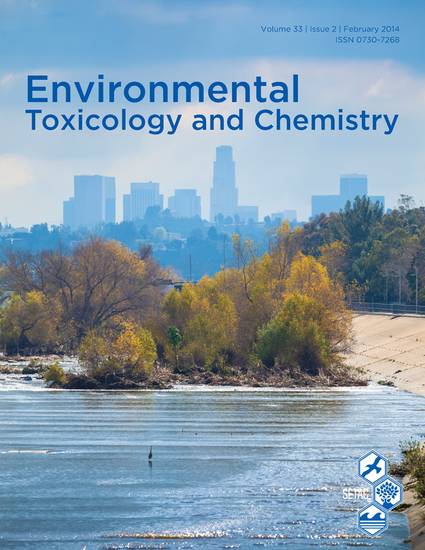
Article
A molecular‐based approach for examining responses of eukaryotes in microcosms to contaminant‐spiked estuarine sediments
Environmental Toxicology and Chemistry
(2014)
Abstract
Ecotoxicological information for most contaminants is limited to a small number of taxa, and these are generally restricted to comparatively hardy organisms that are readily extractable from test media and easily identifiable. Advances in DNA sequencing can now provide a comprehensive view of benthic invertebrate diversity. The authors applied 454 pyrosequencing to examine the responses of benthic communities in microcosms exposed to sediments with elevated concentrations of triclosan, the endpoint being eukaryl communities that have successfully vertically migrated through the manipulated sediments. The biological communities associated with the 3 treatments (control triclosan, low triclosan [14 mg/kg], and high triclosan [180 mg/kg]) clustered into 3 groups: control/low (n = 6 controls and 4 low), moderate (n = 2 low), and high (n = 5 high). One sample was discarded as an outlier. The most pronounced change as a response to triclosan was the loss of number of metazoan operational taxonomic units (OTUs), indicative of the control/low and moderate groups, with this being most evident in the range of taxa associated with the classes Chromadorea and Bivalvia and the phylum Kinorhyncha. The authors also describe a range of other taxa that aided discrimination between the groups; compare findings with traditionally obtained meio‐ and the advantages and limitations associated with both the molecular and traditional approaches. The described approach illustrates the capacity for amplicon sequencing to provide ecologically relevant information that can be used to strengthen an understanding of how sedimentary communities respond to a range of environmental stressors.
Keywords
- Triclosan,
- Metabarcoding,
- Environmental DNA (e-DNA),
- Next generation sequencing,
- 18S rRNA
Disciplines
Publication Date
February, 2014
DOI
10.1002/etc.2450
Publisher Statement
Published by the Society of Environmental Toxicology and Chemistry
Citation Information
Anthony A. Chariton, Kay T. Ho, Dina Proestou, Holly Bik, et al.. "A molecular‐based approach for examining responses of eukaryotes in microcosms to contaminant‐spiked estuarine sediments" Environmental Toxicology and Chemistry Vol. 33 Iss. 2 (2014) p. 359 - 369 Available at: http://works.bepress.com/robin_matthews/21/
